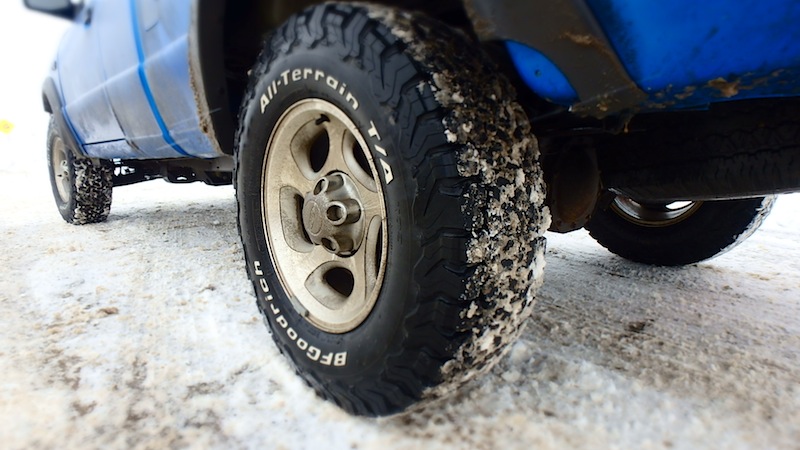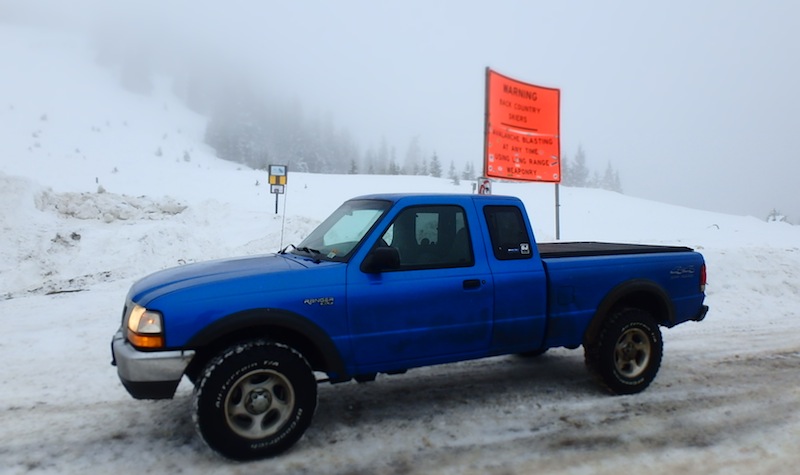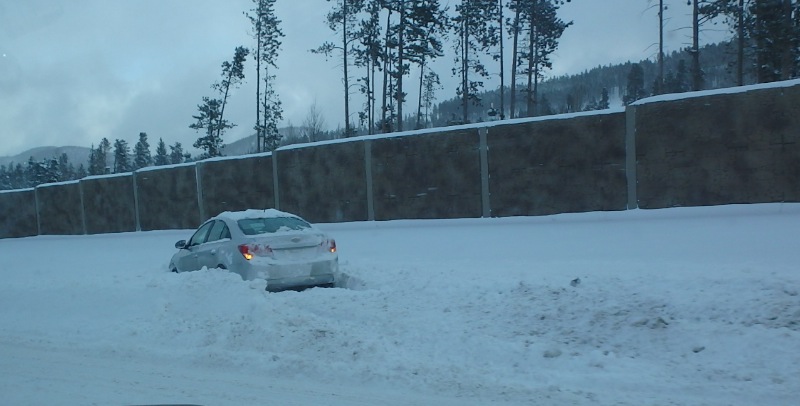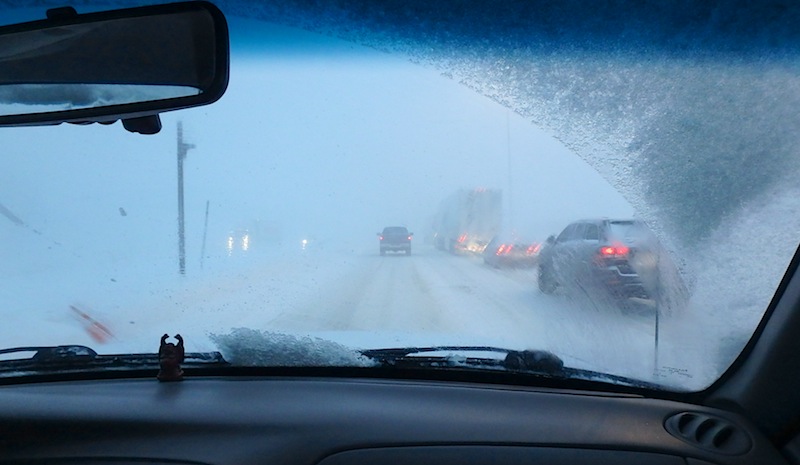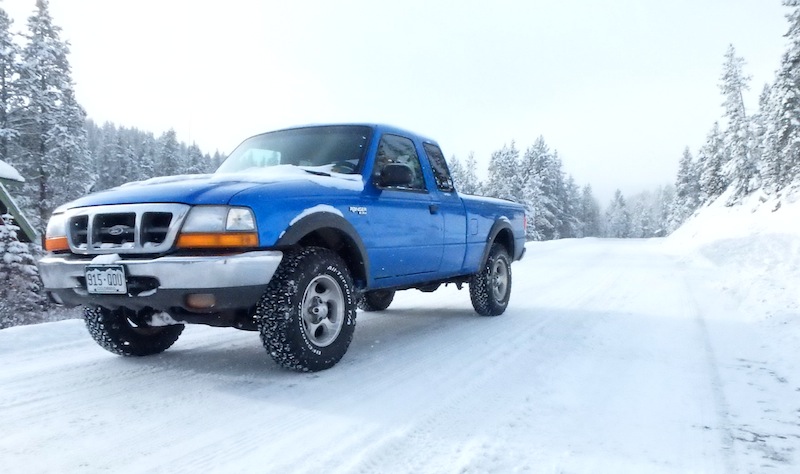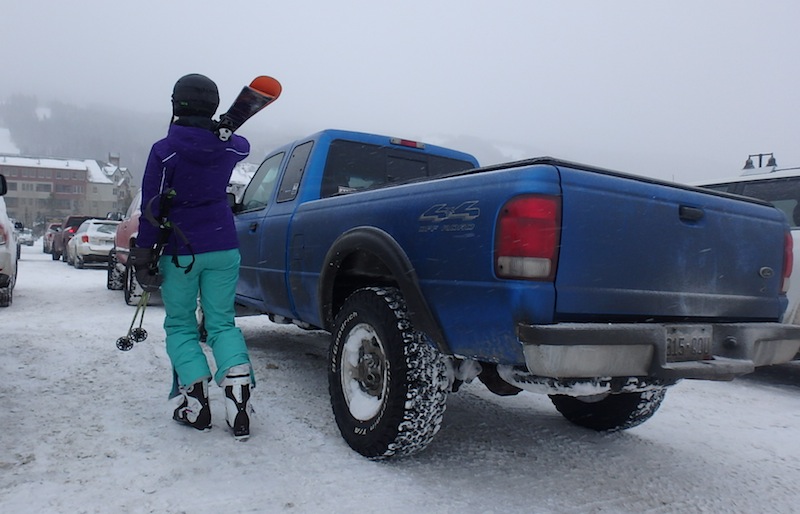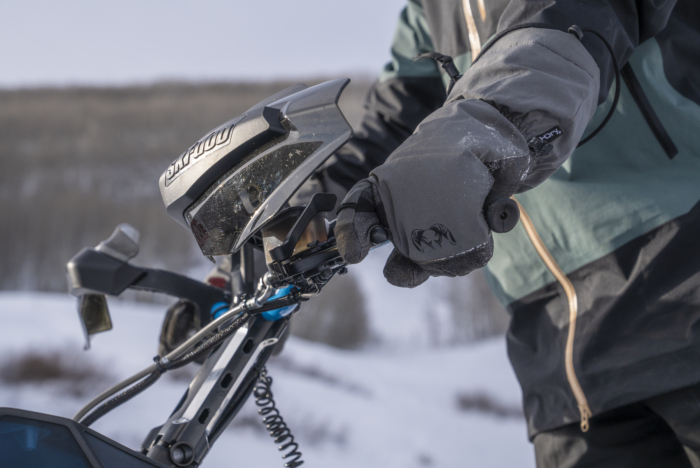The forecast was for powder. But I clearly wasn’t the only one who’d seen the news.
Outside my truck, it was nuking. Slushy snow and ice covered the highway as I and thousands of other weekend warriors white-knucked it up one of the most loved/hated stretches of highway in Colorado, Interstate 70.
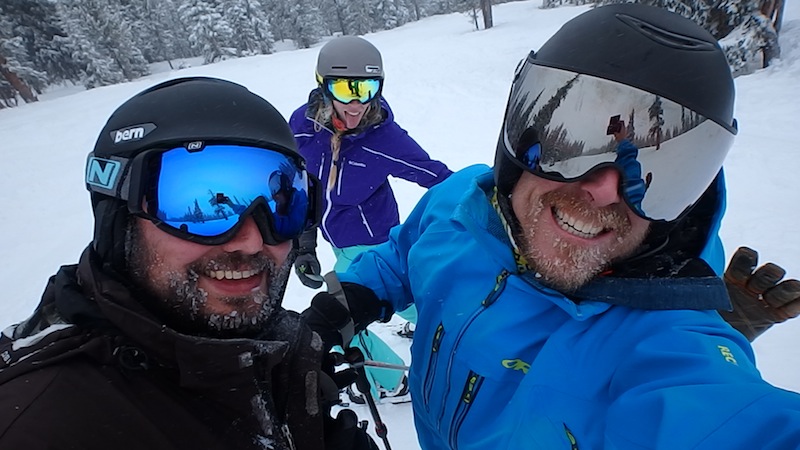
I-70 is a world-class mountain freeway, perhaps one of a kind. It’s also one of only two ways to reach the glorious powder stashes of Summit County from Denver, from which tens of thousands of skiers stream each weekend in search of the deep white.
Passing beneath 14,000-foot peaks, you are likely to see bighorn sheep or mountain goats grazing along the side of the road. The views are stunning, with cliffs, rushing rivers, waterfalls, vast swaths of forest, and ridges cutting against a Colorado sky.
The road goes high and then it goes underground, passing through the Eisenhower Tunnel. At 11,158 feet the passage — straight through a massive mountainside! — is the highest point on the Interstate Highway system and the longest mountain tunnel with nearly 2 miles of subterranean cement.
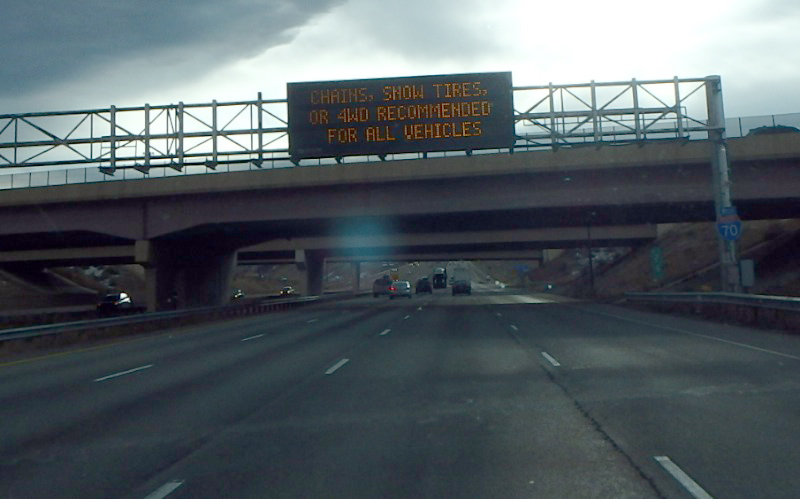
Driving I-70 from Denver into the mountains on a busy day can be frustrating, to say the least. Frequent accidents, big trucks, and just way too many cars make the 67-mile drive from Denver to Silverthorne a real pain.
Add a winter storm to the mix and the drive becomes downright hateful. A normally 90-minute trip suddenly stretches to hours — as many as 8 HOURS to crawl along the freeway’s length on a busy and snowy day.
Bad tires contribute to the chaos. Indeed the Colorado DOT launched an initiative to more aggressively check motorists’ tires at ski resorts in Summit County. When combined with slick roads and heavy traffic, inappropriate tires are a recipe for disaster.
According to CDOT, in one day last winter, as the department assisted dozens of vehicles that had trouble or had spun-out to block traffic, a major culprit was cited to be “bald tires.”
